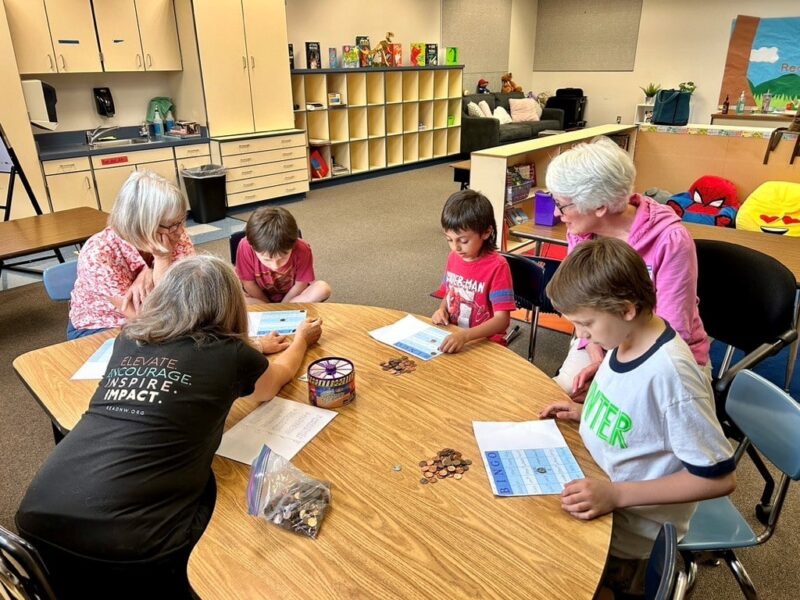
Get Your Kiddo Kindergarten Ready This Summer
“Darn allergies!” a father mumbled sheepishly to the teacher. He wiped his tears after dropping his daughter off for her first day of kindergarten. Few milestones in a child’s life are so full of excitement, anticipation, emotion, and anxiety for parents and children alike as the beginning of school. As a kindergarten teacher myself, and mother of seven grown children, I know that while all those feelings are to be expected, there is much you can do with your child this summer to prepare him for a seamless, successful entry to this new phase in his life.
There is no question that some knowledge of colors and shapes, letters and numbers is a good foundation to have when entering kindergarten. In addition, there a several other areas and skills to consider as you work on readiness with your child. Here are a few activities you can do together this summer to prepare your child to enter the wide world of academia this fall:
1. The ability to recognize and write her name is a skill your child will need on the first day of school. She also will need to be able to recognize her name when she sees it, as many things in her classroom will be labeled. When teaching her to write her name, it is a good idea to check with your school district to see which style of handwriting will be taught in her classroom. These may include the Zaner-Bloser style which is the traditional ‘ball and stick’ letters, and the D’Nealian style which is curvier. As it is very difficult for children to re-learn something they have practiced incorrectly at home, be sure to teach her to write her name beginning with an upper case letter, with the rest lower-case, and to form her letters from the top down. Imagine being proud of a skill you have mastered, only to be told at school that you aren’t doing it correctly! Some fun ways to combine penmanship practice with a sensory experience is to have her write with her finger in shaving cream smeared on the shower wall, or in a plate of salt.
2. Almost 100 percent of the instruction in kindergarten happens as children are sitting together in a group on the floor. This can pose some interesting challenges for little wigglers who are not accustomed to exercising their just-now-developing self-control! Much research has been conducted on the correlation between self-control and the ability to learn. The Stanford Marshmallow Experiment involved sitting a child in a room with a treat on a plate in front of them. They were told that the adult needed to leave the room for a moment, and they were free to choose when to eat their treat. They could eat it immediately, or, if they waited for the adult to return, they could have two treats. At that point, the adult would leave for a few minutes to observe the decision-making efforts of the children. The videos of the children agonizing over their decision are priceless. Some children quickly enjoyed the reward, but many were able to accept delayed gratification and wait for both treats. Both groups were followed throughout their school years to see how their reactions affected their academic lives in comparison with their peers. Not surprisingly, the more patient youngsters showed more ability to control their bodies during instructional times, and were more able to remain on task when doing independent work. This ability to focus helped them learn at a higher rate than other children.
So how do we help children develop self-control? You are probably already doing many of these things with your child. Having them wait until after dinner for a cookie is not only good nutrition, but good self-control. Not allowing a child to touch merchandise in the store (“Look with your eyes, not with your hands!”) is teaching self-control. Playing childhood games like “Red Light, Green Light”, or “Mother, May I?” are causing your little person to control his body from moving until the appropriate time. Singing songs like “Bingo” develop self-control because, even though the music might still be playing for all the letters in the word, we are not allowing our mouths to sing them, which is a form of self-control. The more highly evolved this skill is, the easier your child will adapt to following school and classroom rules, staying on task, and not distracting himself or others during the process of learning.
3. The ability to listen and follow directions is a major component of school expectation. Strengthen your child in this important skill by increasing the complexity of your requests. Begin with one-step instructions such as: “Put on your shoes.” Add a second step when your child can consistently carry out your request: “Put on your shoes and get your backpack.” Developmentally, kindergartners are learning to follow instructions with three or four different steps. A fun way to practice this skill is to play “Simon Says.” If your child has difficulty with this skill, it helps to have them put up a finger for each step as they repeat back to you what they heard you say.
4. Another element to getting ready to start school is thinking about what your child will wear to school. Choose clothing that your child can manage alone. Allowing your child to do everything he can by himself encourages independence and allows him to grow and mature in essential ways. If the jeans are hard to fasten after a bathroom trip, choose a different style. If your child cannot yet tie his shoes, choose a Velcro closure.
Here in the Pacific Northwest, layers are almost always appropriate, so choose clothing that he can take off by himself, too. And don’t forget to label each piece with his name! Especially when clothes are new, the child may not even recognize it as his after he takes that layer off. Make sure that jackets have hoods to keep them dry outside. Many times schoolchildren play outside and do not have the option of playing under a covered area, even though it’s raining. Returning to class damp is not only uncomfortable, but it interferes with their learning. Another good idea is to send a second set of dry clothes in a plastic bag in the backpack.
The first year of school is full of wonder, excitement, and tremendous growth for your child! Your support with her developing skills will help to smooth out potential bumps, and pave the way for a successful start to her academic years.
For more information regarding kindergarten readiness, I recommend these helpful websites:
The Washington State Department of Early Learning





